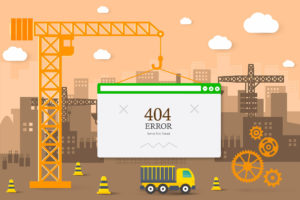Browserless web is best known as communication over the World Wide Web between programs rather than between people and the server programs at Web sites. Many people believe that in the future, program-to-program communication will be more popular, as it will generate more traffic than browser-to-Web site communication. Even though browser-to-Web site communication is program-to-program – the browser is a client program and the Web server is a server program on behalf of a Web site – this new program-to-program communication does not involve an interactive user. Application that orders fulfillment is likely candidates for the browser less Web.
Of course, there are also some pros and contras on the topic of native versus web experiences. Many are comparing its reliability and speed with the native app experience. Therefore, in this article, we will explain how to design and develop progressive web applications (PWAs) in brief, so that many can experience a browserless web. Hopefully, this article would be beneficial for web developers or web designers who want to create a more engaging web.
- Instant Page Transitions
It’s an open secret that users do not want to wait. Therefore, you have to be able to get in and around an app quickly without making them wait for your content to load in each interaction.
Solved with PWA
In order to pass the Lighthouse checklist for a PWA, one must follow certain performance-enhancing guidelines. Then, the content will be cached behind the scenes and to make you feel like there is no loading event, content should be cached behind the scenes.
- Perceived Performance
You might be surprised by knowing that the level of stress caused by mobile delays is pretty much the same as watching a horror movie. Therefore, a good app should not let their users wait for their content. Other thing like elements appearing asynchronously as the app loads should also be avoided.
Solved with PWA
With the “Add to Homescreen” PWA launch transition, you can have a visual bridge between loading and loaded content. This shows how “preloaded states” can increase the perception of speed and seamlessness. Through a well-designed PWA, you can mimic the end state of the page and by using lazy-loading to deprioritize elements that are out of view; you can make the initial loading seem faster.
- Works Offline
People, who prefer to download native apps, mostly want to use the apps without constantly relying on an Internet connection in order for the apps to function properly.
Solved with PWA
To solve this problem, the page content will be cached behind the scenes, allowing it to be accessed where there would, otherwise be a lag in the browsing experience, such as when entering a tunnel while driving.
- Back Button
Android provides a back button through the device which makes some people think there is no need to replace the browser’s back functionality. In fact, most apps choose to offer a back button in the header as an “up” action that navigates within the hierarchical relationship between pages.
Solution
The only possible solution for this problem is to place the menu button in the top left with a back button once the user progresses past the initial page. It will be validated once we put this pattern in front of users. Once participants had progressed through the initial home page, you can ask them to navigate to a new section.
Can We Use it in the Real World?
Of course you will need “Add to Homescreen” to develop into an accepted group of patterns. To get some best practices about browserless web, you can read the following practices:
Sticky Headers, Persistent Actions
With this sticker, visitors can understand about the importance of learning ability when introducing new patterns. In fact, the main purpose of this sticker is to ensure that users can easily find crucial global actions.
Prompt Intelligently
As it is said that PWA’s will get full control when they want to prompt users, this makes “Add to Homescreen” installation increase.
Stress and Test
One of the most important validation processes is to do the stress test in multiple applications. This is because, in most cases, the pattern stood up well to the latest brand. For example, the Lancome’s PWA contains many calls to action, which, as a result, can help in identifying overflow menu as a great opportunity to simplify its user interface, while offering exclusives program.
Conclusion
Many believe that “Add to Homescreen” will offer users to a next level experience, which is more engaging and converting user. This is because, a more modern, app-like web can have more positive effects on engagements, as it meets user expectations of performance and design.
The only way to meet those expectations is by combining PWA performance enhancements with intuitive design patterns in navigation and app-like user experience.



